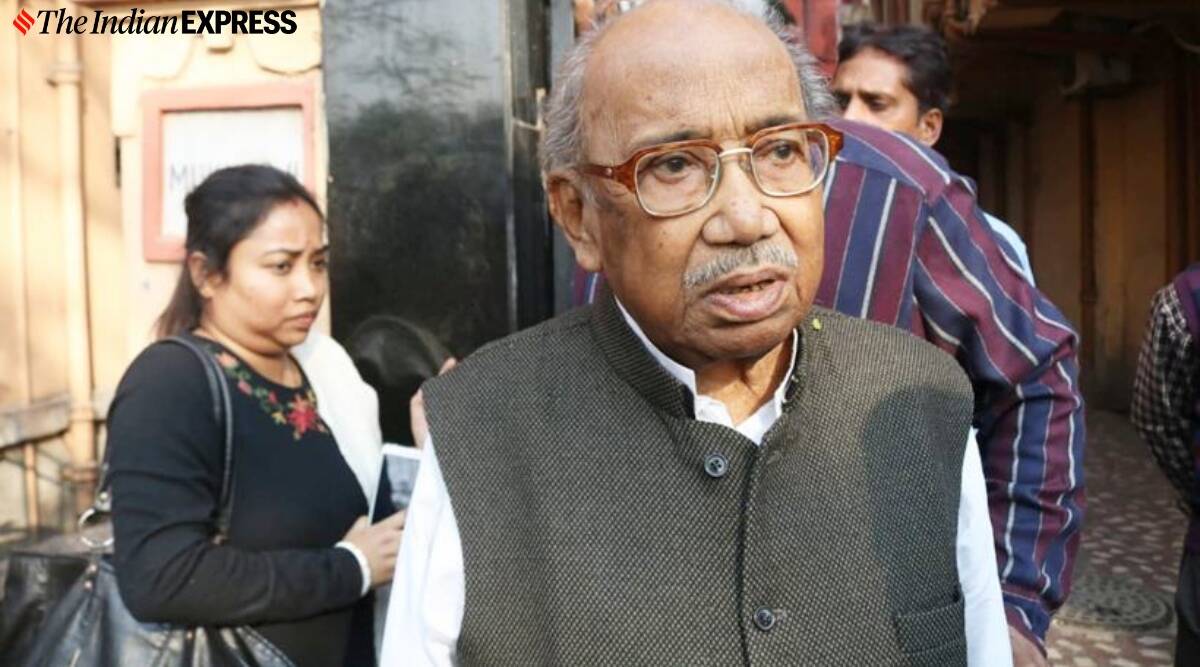 Majumdar came on his own with Balika Badhu (The Child Bride, 1967), a film that charmed a generation and remains his most remembered film. (Express Archives)
Majumdar came on his own with Balika Badhu (The Child Bride, 1967), a film that charmed a generation and remains his most remembered film. (Express Archives)The collective consciousness of cinema scholarship in Bengal was, till recently and overwhelmingly, beholden to the triad of Satyajit Ray, Ritwik Ghatak and Mrinal Sen. The problems of such trio-theism are nowhere revealed more starkly than with the passing of an elderly talent from an era when Bengali cinema mattered. Tarun Majumdar, who passed away earlier this week, was no exception. He was cruelly under-regarded in his peak years and his death caused an upsurge in collective nostalgia. He was undeserving of both.
Tarun Majumdar had his debut as part of Yatrik, a prominent example of a unique phenomenon in Bengali cinema – an ensemble directors’ group. Yatrik’s first film, with the then wildly successful pairing of Uttam Kumar and Suchitra Sen, was Chaowa Pawa (Roads to Romance, 1959). It was a deft and delightful adaptation of the runaway bride theme, Frank Capra’s It Happened One Night being the closest reference. It is on the set of this film, and while he was passionately describing a dusk scene to Uttam, that the star interjected and asked Majumdar if he is likely to get into direction on his own. Whether that played a part or not, it took him a few more years to do so. But the other three films Majumdar made as part of Yatrik — Smriti Tuku Thak, Kancher Swargo and Palatak are eminently memorable. In fact Kancher Swargo (Brittle Paradise, 1962) could well make a claim to being part of Bengali popular cinema’s hall of fame.
Majumdar came on his own with Balika Badhu (The Child Bride, 1967), a film that charmed a generation and remains his most remembered film. With this film, he decidedly turned away from the cinematic and narrative space that the Bhadralok urbanist cinema had carefully conjured through the 1950s, and continued to heavily invest in through the mid-1970s. Majumdar stayed away from that, preferring to strengthen his natural affinity for lives lived away from the convolutions of city life. His next 10 years saw the likes of Nimantran (The Invitation, 1971) and Fuleswari (The Vagabond, 1974) — both quite watchable romances tapping into the everyday desires and survivalism intrinsic to people in Bengal. Indeed, all three, being adaptations, worked fine at the level of being a-temporal representations of an imaginary bucolism. This was not serendipity, because in these years Bengal was in tumult. More than ever, those who cared for the state, needed the assurance of sonically rich and free-form, idiomatic romances.
But perhaps his best two films are the ones where he played with genres and pursued atypical spaces, going beyond his favourite playground of rustic romances. Sansar Seemantey (At the Edge of the World, 1975) was as engaging a romance as it was real — between a thief and a streetwalker in Calcutta. It did not entirely eschew the sentimentalisation of brothel life but still managed to coax the narrative towards a sincere place-making of Calcutta’s nether regions. The film was bolstered by Rajen Tarafdar’s lean script and Soumitra Chatterjee’s uncharacteristic and superlative turn as a lowly, hounded crook. The other one, Sriman Prithviraj(The Young Conqueror, 1973) an endearing mix of fantasy and folklore was his best film. The story of a young boy with a tendency for harmless mischief who finds himself entangled in an untimely marital bond, the film was genuinely humourous, absorbing and absolutely charming. The primary attraction of the film was Utpal Dutt — the fumbling provincial patriarch who, in his eagerness to please his British boss, speaks English in haste and bungles effortlessly. Just to think of Dutt, a Shakespearean to boot, to pull off what turned out to be one of his most precious roles is a riot in itself.
Subscriber Only Stories
As the 1980s dawned and the Left Front came to power, Majumdar, like most of his peers, lost most of his gifts — humour being the most obvious. But he stuck determinately, thanks to his belief perhaps in the Left’s rhetoric, to his arcane depiction of the rural life of the 1960s and 1970s, which increasingly looked insipid. His 1980s films, pulled down anyway by performers of middling capacity, are impossible to watch anymore, primarily because of their almost infantile belief in the goodness of humans and the essential geniality and completely unreal depiction of rural life. The same simplicity and artless trust generally plagues his recent, long memoir Cinemapara Diye (Through the neighbourhood of Cinema) but like his early cinema, there are moments of pure charm.
Majumdar certainly deserved a much meatier part among those assigned with the arduous task of having built Bengali cinema’s long and ennobling history. And with him, certainly an era ended, for no filmmaker is now left from that period. But it is also true that that era had actually ended 40 years ago. Much of what came since then, as we now know, is just white noise.
The writer teaches at Ambedkar University, Delhi. He is the author of Uttam Kumar: A Life in Cinema (Bloomsbury, 2021)
- The Indian Express website has been rated GREEN for its credibility and trustworthiness by Newsguard, a global service that rates news sources for their journalistic standards.

